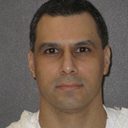Florida’s governor halted all executions in the state until a commission can investigate and report what went wrong with the lethal injection of Angel Nieves Diaz on December 13. Gov. Jeb Bush issued an executive order announcing a panel of experts to make recommendations for changes to the process and said that no death warrants will be signed until modifications are adopted. Diaz’s execution took more than twice as long as normal and required two rounds of the lethal chemicals. Witnesses stated that Diaz appeared to be moving, grimacing, and trying to mouth words after the first injection.
Hours later on Friday, U.S. District Judge Jeremey Fogel ruled that California’s process of lethal injection was “broken” and violated the Eighth Amendment’s ban on cruel and unusual punishments. He noted a “pervasive lack of professionalism” in the supervising of executions. His ruling followed extensive hearings over many months to try to find a solution to the lethal injection controversy. The execution of Michael Morales in California was halted at the 11th hour early in the year after doctors, who were called in to supervise the lethal injection, decided that they could not do so for ethical reasons. Both Gov. Bush and Judge Fogel indicated that modifications to the lethal injection process may still allow the method to be used in the future.
Officials in Florida had earlier indicated that Diaz’s lengthy execution may have been due to a pre-existing medical condition. But doctors interviewed indicated that there were likely problems with the execution process. “I’m at a loss to explain all those occurrences,” said Dr. Rafael Miguel, a University of South Florida professor who is president of the Florida Society of Anesthesiologists. “It just makes it hard to make any conclusion about what happened.”
“If he really moved for that amount of time, there was some huge problem,” said Dr. Jonathan Groner, an associate professor for surgery at Ohio State University who has testified in death penalty cases. “One can only surmise that he did not become unconscious and he felt pain.”
(See St. Petersburg Times, Dec. 15, 2006, N.Y. Times, Dec. 15 & 16, 2006; Washington Post, Dec. 16, 2006).
Diaz’s execution was the last one scheduled in the country this year. He was the 53rd person executed this year, and the fourth in Florida. On the whole, executions are down 12% from last year and down over 45% since 1999. See DPIC’s 2006 Year End Report and Lethal Injection. Read Gov. Bush’s Executive Order. Read Judge Fogel’s Decision in the Morales case.



